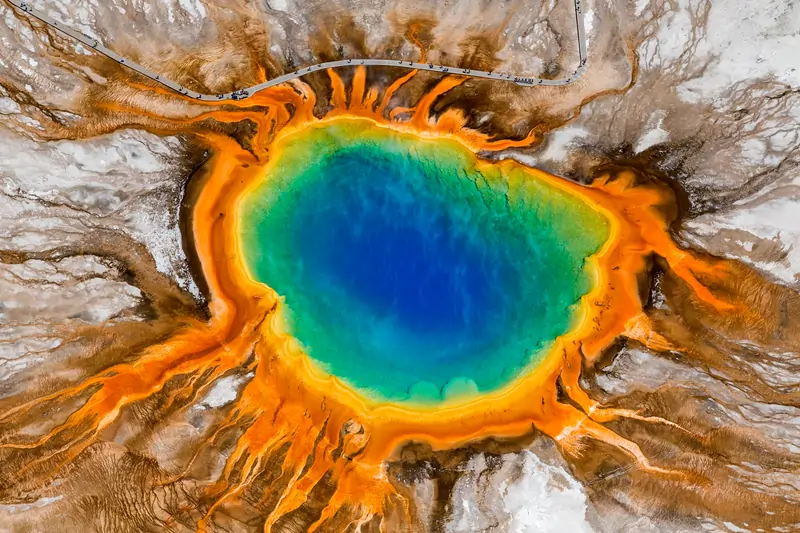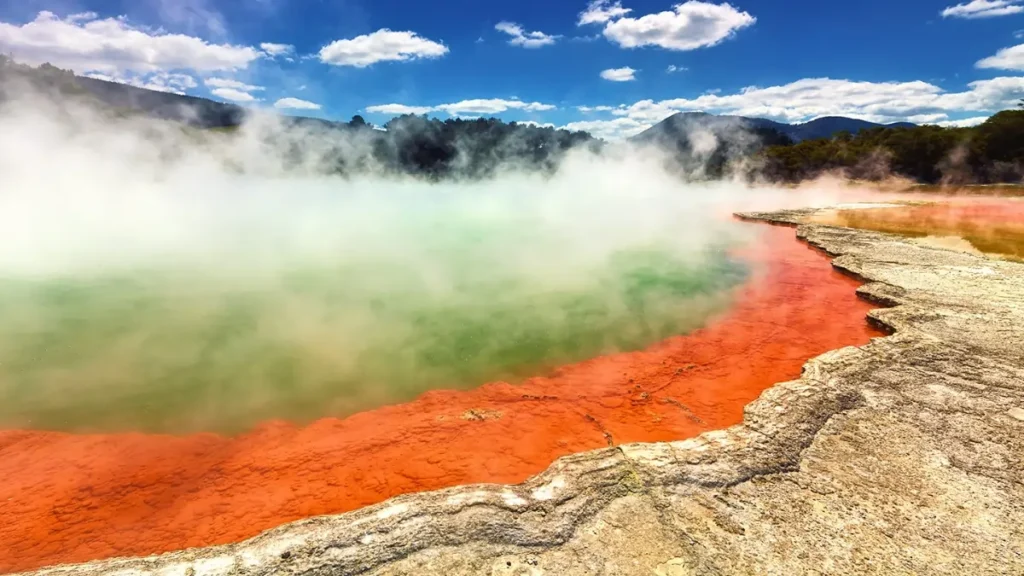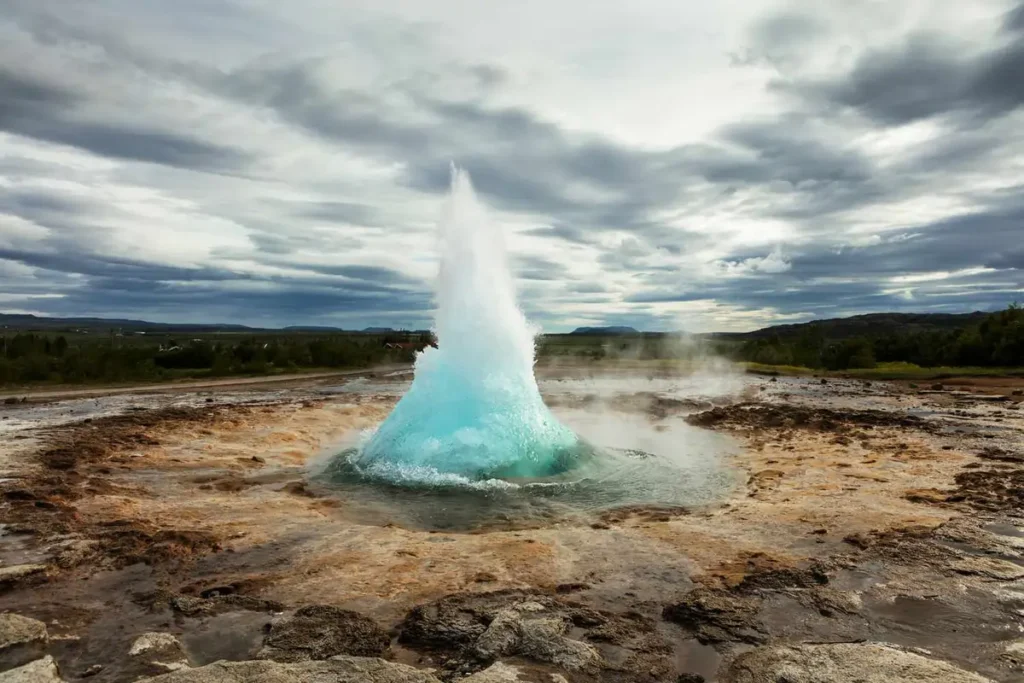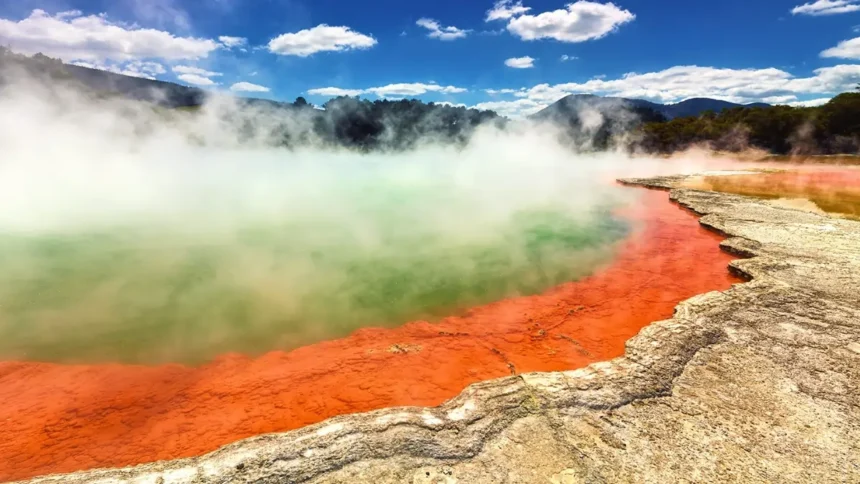Have you ever marveled at the raw power of the Earth beneath your feet? Geothermal wonders are natural reminders of the Earth’s incredible energy created by the heat stored beneath its surface. These geothermal features showcase the planet’s dynamic inner workings, from bubbling hot springs to explosive geysers. But where are the most awe-inspiring geothermal sites located, and what makes them unique?
In this article, we’ll take you on a journey to discover 5 geothermal wonders worldwide that should be on your travel bucket list. Whether you’re a nature enthusiast, an adventurer, or simply curious about the Earth’s natural beauty, these destinations offer a glimpse into some of our planet’s most extraordinary geothermal features.
Read also: Unlocking the Truth: Is Geothermal Energy the Ultimate Renewable Resource?
1. Yellowstone National Park (USA)
Overview: Yellowstone National Park, located primarily in Wyoming, is home to one of the largest geothermal systems on Earth. It boasts over 10,000 geothermal features, including geysers, hot springs, mud pots, and fumaroles. The Yellowstone Caldera, a massive supervolcano beneath the park, drives Yellowstone’s geothermal activity.
- Key Feature: Old Faithful, the world’s most famous geyser, erupts regularly every 60 to 90 minutes, shooting water up to 185 feet into the air.
- Fun Fact: Yellowstone contains more geysers than the rest of the world combined.

Why It’s a Geothermal Wonder: Yellowstone’s combination of geysers, hot springs, and geothermal pools, such as the iconic Grand Prismatic Spring, offers a stunning visual display of nature’s raw power. The vibrant colors of these features, created by heat-loving bacteria, make this park a must-visit geothermal wonder.
Read also: Yellowstone National Park: 5 Must-See Geothermal Wonders in Yellowstone National Park
2. The Blue Lagoon (Iceland)
Overview: Located in a lava field in southwestern Iceland, the Blue Lagoon is one of the country’s most popular tourist destinations. Unlike natural hot springs, the Blue Lagoon is a man-made geothermal spa that taps into the energy of Iceland’s geothermal power plants. Its milky blue waters are rich in silica and other minerals, making it a unique spot for relaxation and healing.
- Key Feature: The lagoon is kept at a consistent temperature of 98-104°F (37-40°C) year-round, making it perfect for soaking even in Iceland’s frigid winter.
- Fun Fact: The mineral-rich waters are said to have healing properties, especially for those with skin conditions like psoriasis.
Why It’s a Geothermal Wonder: The Blue Lagoon combines geothermal energy with modern innovation perfectly. Its stunning color, soothing waters, and surrounding volcanic landscapes make it an unforgettable geothermal experience.
Read also: Volcanoes – The Science And Secrets Of The Mountains Of Fire
3. Rotorua (New Zealand)
Overview: Situated on the North Island of New Zealand, Rotorua is a geothermal wonderland filled with bubbling mud pools, spouting geysers, and hot springs. The town sits on the Pacific Ring of Fire, a tectonic hotbed responsible for the area’s incredible geothermal activity.
- Key Feature: Pohutu Geyser, located in Te Puia, is the most active geyser in the Southern Hemisphere, capable of erupting up to 20 times a day.
- Fun Fact: The name Rotorua comes from the Māori language, meaning “second lake,” and the region is culturally significant to the Māori people.

Why It’s a Geothermal Wonder: Rotorua’s combination of geothermal activity and rich Māori culture makes it an extraordinary destination. Whether exploring the steaming landscapes or soaking in a natural hot spring, Rotorua offers a truly immersive geothermal experience.
Read also: The Science Behind Geyser Eruptions: Why Nature’s Fountains Explode
4. The Geysir Geothermal Area (Iceland)
Overview: Located in the Haukadalur Valley, the Geysir Geothermal Area in Iceland is home to the geyser that gave its name to all others: The Great Geysir. While the Great Geysir is largely dormant, the nearby Strokkur Geysir erupts every few minutes, sending water as high as 130 feet into the air.
- Key Feature: Strokkur’s regular eruptions make it one of the most reliable geysers in the world.
- Fun Fact: The word “geyser” originated from the Icelandic word geysa, which means “to gush.”

Why It’s a Geothermal Wonder: The Geysir Geothermal Area offers an up-close look at the raw forces shaping Iceland’s volcanic landscape. Powerful geysers, steaming vents, and bubbling hot springs highlight the country’s incredible geothermal energy.
Read also: Land of Contradiction – Why is Iceland volcanically so active?
5. Beppu Onsen (Japan)
Overview: Japan is known for its onsen (hot springs), and Beppu is one of its most famous geothermal areas. Located on the southern island of Kyushu, Beppu boasts over 2,800 hot springs, producing more hot water than anywhere else in Japan. Visitors can experience the springs through traditional baths and observe the area’s “Hells,” which are colorful hot springs unsuitable for bathing.
- Key Feature: The Hells of Beppu is a series of vibrant geothermal pools, including Umi Jigoku (Sea Hell), known for its striking blue water.
- Fun Fact: Beppu’s steam rising from the springs is so abundant that it creates a surreal, otherworldly atmosphere over the entire city.
Why It’s a Geothermal Wonder: Beppu offers a unique natural beauty and relaxation blend. Whether you’re soaking in a traditional onsen or marveling at the colorful geothermal features, Beppu showcases the diverse ways geothermal energy is celebrated in Japan.
Read also: Don’t Miss These 5 Hidden Hot Springs: Your Secret to Ultimate Relaxation
5 Must-See Geothermal Wonders Around the World
| Geothermal Wonder | Location | Key Feature | Why It’s Special |
| Yellowstone National Park | Wyoming, USA | Old Faithful and Grand Prismatic Spring | Largest geothermal system in the world |
| Blue Lagoon | Iceland | Mineral-rich man-made geothermal spa | Known for its healing properties and unique color |
| Rotorua | New Zealand | Pohutu Geyser and bubbling mud pools | Geothermal activity with rich Māori culture |
| Geysir Geothermal Area | Iceland | Strokkur Geyser with regular eruptions | Gave its name to all geysers worldwide |
| Beppu Onsen | Kyushu, Japan | 2,800+ hot springs, including vibrant “Hells” | Famous for both onsen bathing and scenic springs |
Conclusion
Exploring geothermal wonders gives us a glimpse into the Earth’s raw power, where natural heat creates spectacular displays of steam, water, and color. From the famous geysers of Yellowstone to the soothing waters of Iceland’s Blue Lagoon, these geothermal destinations offer a blend of natural beauty, relaxation, and cultural significance. Each site is unique, showcasing the diversity of the planet’s geothermal features and reminding us of the powerful forces at work beneath our feet.
FAQs
1. What makes geothermal wonders unique compared to other natural phenomena?
Geothermal wonders are powered by the Earth’s internal heat, creating hot springs, geysers, and volcanic landscapes. These phenomena offer a rare glimpse into the planet’s geothermal activity, making them distinct and captivating natural attractions.
2. How do geothermal wonders form, and what drives their activity?
Geothermal wonders form due to the Earth’s tectonic movements and volcanic activity. The heat from the Earth’s core rises to the surface, creating features like hot springs, geysers, and fumaroles powered by underground magma chambers and heated groundwater.
3. What are some examples of geothermal wonders that are must-see destinations?
Must-see geothermal wonders include Yellowstone National Park’s geysers in the USA, Iceland’s Blue Lagoon, New Zealand’s Rotorua geothermal springs, Japan’s Beppu hot springs, and Italy’s Mount Vesuvius, showcasing the planet’s fascinating geothermal activity.
4. Are geothermal wonders accessible for visitors, and what precautions should be taken?
Many geothermal wonders are accessible via national parks and tourist areas. However, visitors should follow safety guidelines, avoid touching hot water, stay on designated paths, and be aware of sulfur emissions, which can affect breathing in some areas.
5. How do geothermal features benefit the environment and local communities?
Geothermal features provide sustainable energy resources, reduce reliance on fossil fuels, attract tourism, and boost local economies. They also support unique ecosystems, fostering biodiversity in areas with geothermal activity.
6. What is the best time of year to visit geothermal wonders worldwide?
The ideal time depends on the destination. In places like Iceland, winter enhances the experience with snowy landscapes, while Yellowstone’s geothermal features are stunning year-round. Research the climate and accessibility of specific sites before planning your visit.





